Lower back pain is a common problem, affecting an estimated 619 million people worldwide [1]. If you’re a runner, lower back pain can be especially disruptive, especially if you find your lower back pain gets worse when you run.
Running helps millions of people keep fit, stay energised, and reduce stress. But up to 20% of runners are affected by soreness and discomfort in the lumbar region [2]. So if your running is compromised by lower back pain, it can take its toll on your overall wellbeing.
In this comprehensive guide to lower back pain for runners, you’ll learn all about the symptoms and causes of lumbar pain, why it affects runners, and what you can do to treat lower back pain and get your training regimen back on track.
Is running good for lower back pain?
Staying active is one of the best ways to prevent and reduce lower back pain, as well as certain other back and spine conditions [3]. For some people, running is a great way to keep moving without causing discomfort in the lower back. Research has shown that low back pain is less common than other injuries among runners, and also affects runners less than other athletes [2].
However, this isn’t always the case. For some, running can put a lot of pressure on the spine, leading to pain radiating around the pelvis and up through the back.
If you find that lower back pain starts or gets worse during or after a run, it’s best to stop running and rest for at least a few days. In these cases, it’s unlikely that running is good for your lower back, so you may need to take steps to treat or prevent further pain.
Why does my lower back hurt from running?
Here are ten of the most common causes of low back pain in runners.
1. Overexertion
Exercising too hard or for too long can lead to low back pain, especially if you push through the discomfort and continue training [4].
If you start to feel a niggle in your lower back, take stock of the distance and speed you’re currently working at. If you’ve upped these recently, you may need to stop and build up your running intensity more gradually.
2. Lack of core strength
A strong core is essential for a healthy spine, as it gives your lower back more support [5-6]. Running can work the core, strengthening your abdominals, obliques, and other stomach muscles.
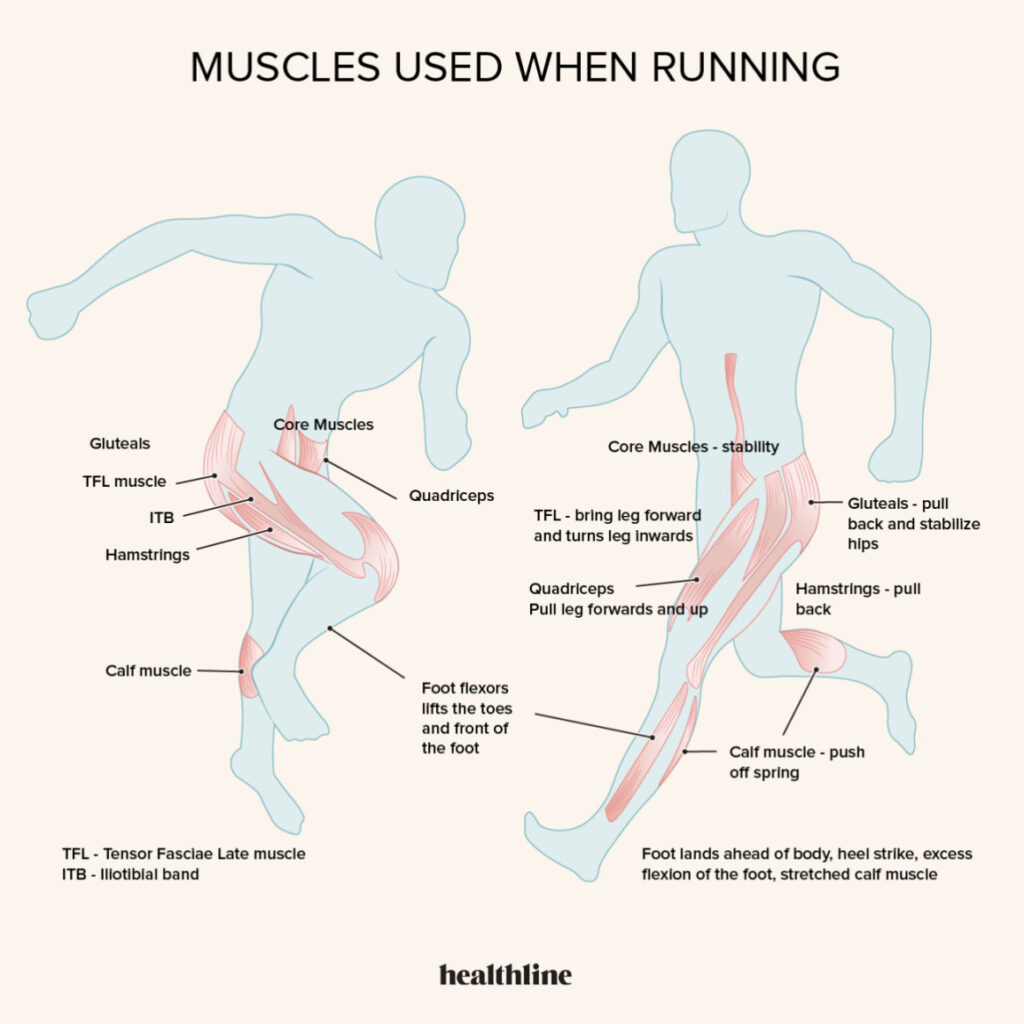
But if your core muscles aren’t initially strong enough to maintain a regular running practice, you might need to get your core in shape beforehand. Core stabilisation exercises can reduce chronic back pain by up to 76.8% [6].
3. Weakness in the back
Lack of muscular strength in the back muscles can also contribute to lower back pain in runners. Running is most likely to strengthen the muscles in the abdomen and lower limbs, leaving the upper back muscles neglected.
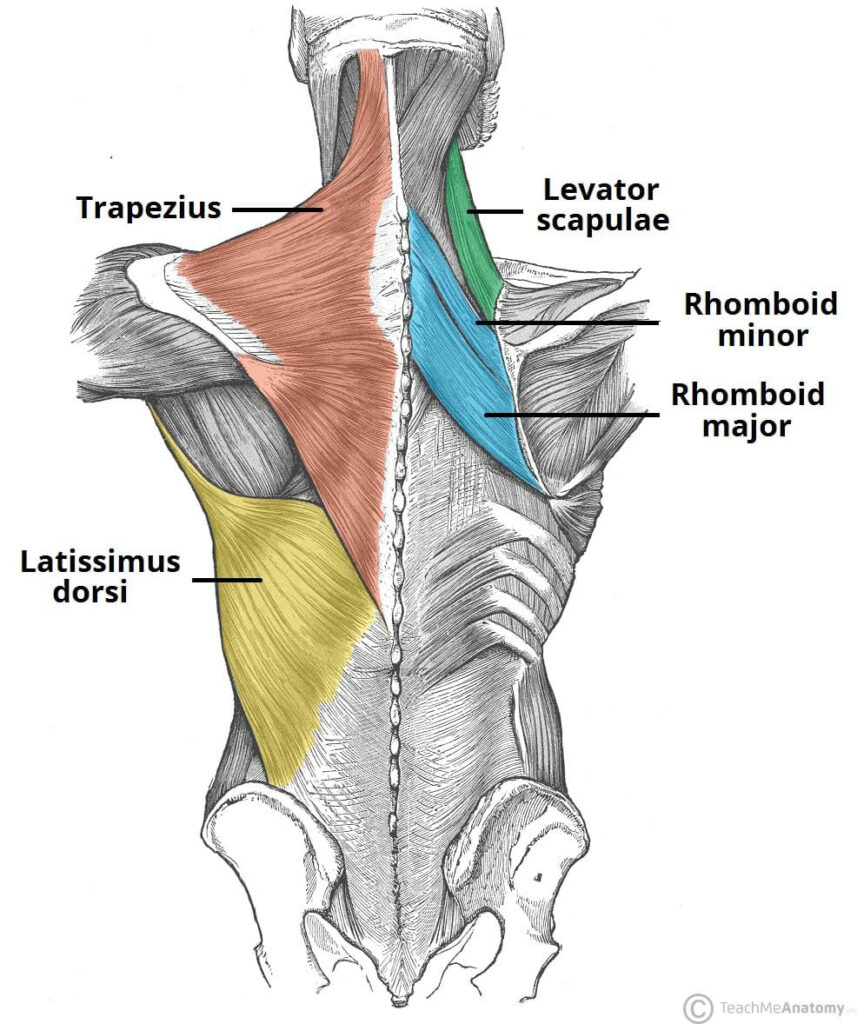
Conditioning the neck, upper back, and shoulders in conjunction with targeted lower back mobilisation and stabilisation exercises can reduce lower back pain more effectively than lower back exercises alone [7].
4. Herniated disc
A herniated disc (also known as a slipped disc) happens when the spongy tissue between the bones of your spine becomes dislodged, often as a result of vigorous exercise.
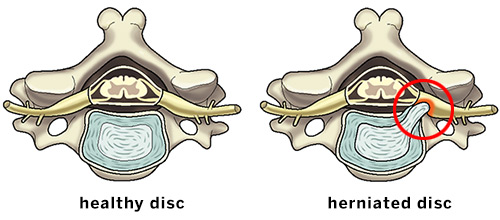
If the disc compresses a nerve it can cause significant pain in the lower back. Compression of the sciatic nerve leads to a painful condition known as sciatica, which sends shooting pains through the leg and hip. Sciatica can be exacerbated by movement including running.
Find out more about NHS trapped nerve treatment.
5. Stress on the sacroiliac joint
The sacroiliac joint (SIJ) links the pelvis to the spine. Supported by a network of muscles, ligaments, and other tissues, the sacroiliac joint stabilises your lower back while allowing a range of motion through the hips.
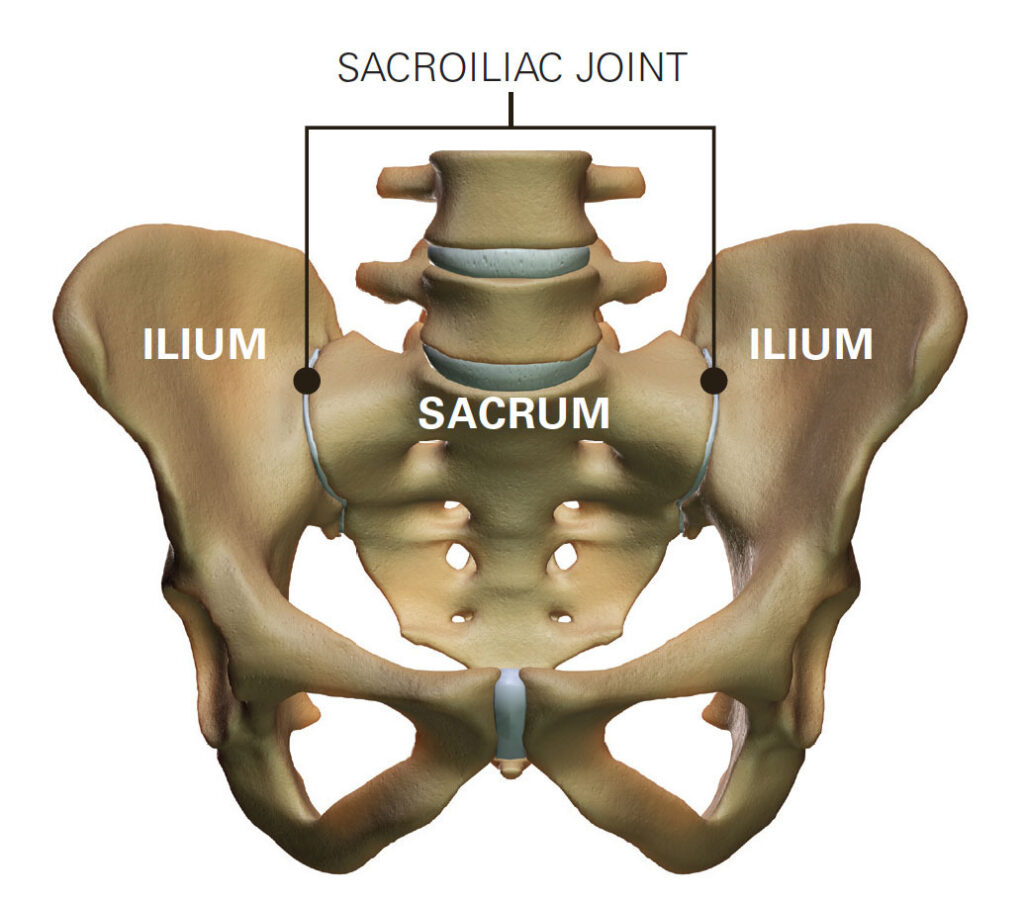
Up to 30% of patients with low back pain have pain that originates in the sacroiliac joints [8]. In addition, sacroiliac joint pain may compromise your running gait. Female runners with SIJ pain demonstrated less knee flexibility and greater overstride compared to those without [9].
Find out what treatments are available on the NHS for sacroiliac joint pain.
6. Stress on the facet joints
Facet joints are the connectors between each of the bones in your spine (vertebrae). They enable your spine to move and rotate, particularly in the upper back.
When you run, your facet joints come under a lot of stress. If your glutes and abdominal muscles can’t sufficiently support your facet joints, it can lead to pain in your lower back.
If you have facet joint pain, you may find discomfort is worse in the morning, after exercise (including running), and/or when sitting or standing.
7. Poor posture or gait
Poor running gait has been linked with the development of low back pain in marathon runners [10]. Bad posture can lead to changes in the biomechanics of your spine, pelvis, and surrounding muscles. Additionally, poor posture can put a strain on your lower back muscles leading to lower back pain when standing.
A good running posture consists of:
- Head held up, looking straight ahead.
- Arms and shoulders swinging naturally.
- A stride that’s not too wide or narrow.
8. Being overweight
Being overweight is often a factor in low back pain development compared with those in a normal or underweight range [11]:
| BMI Range | % of patients with chronic low back pain |
|---|---|
| Underweight | 2.7% |
| Normal | 4.7% |
| Overweight | 5.9% |
| Obese | 6.7% |
Being overweight can contribute to runners’ low back pain in several ways [12]:
- Increased pressure on the joints;
- Negatively affects running gait and posture (especially if you have low back pain already);
- May make you more prone to overexertion
9. Not warming up
It’s really important to warm up properly before you start running. Mobilising the whole body with an appropriate warm-up routine can improve the health of your lower back area and prevent possible sudden or severe back pain [10].
10. Unsuitable running shoes
Research suggests that the type of running shoes you wear (whether they’re cushioned, minimalist, hard, soft, etc) won’t actually make much difference to whether you develop low back pain [13].
However, if you’re wearing non-running trainers or another unsuitable type of footwear to run in, these may not absorb shock in the same way as purpose-made running shoes. This can increase the stress and impact on your spine, causing pain in the lower back.
Why do I have lower back pain on one side when running?
If you have lower back pain when running, it’s normal to experience more discomfort on one side. This may be due to:
- Muscle imbalance — Muscles on one side of the body are stronger than those on the other.
- Poor posture/gait — Leaning or hunching when you run can put more strain on the joints on one side of the body.
- Sciatica — Sciatica usually affects just one side of the body.
How do I strengthen my lower back for running?
Strength training is an effective first-line treatment for low back pain. With targeted exercises for your core, back, glutes, and legs, you can strengthen the key muscles to support your lower back and restore your running routine.
1. Pilates
Pilates consists of a group of exercises designed to develop your core muscles and improve flexibility, coordination, and strength.
Some of the best Pilates exercises for runners with low back pain include:
- Squats
- Pelvic curls
- Seated scissor kicks
- Leg lifts and toe taps
2. Resistance training
Using resistance bands, free weights, weight machines, and your own body weight, you can generate resistance that helps build strength throughout the body.
Adding tension to your movement forces the muscles to work harder to counteract this resistance. This builds strength, while ensuring your core is activated to keep your body stable and balanced.
3. Planking
Planks effectively activate the muscles required for a strong, stable spine. Spending time each day in plank position will condition your body for a less painful running experience.
If full or side planks are too intense right now, start with a knee plank. When you can hold this position comfortably for a minute or more, build up to a full plank.
If you feel pain in your back when planking, your posture may not be quite right. Keep the following in mind when you perform a plank:
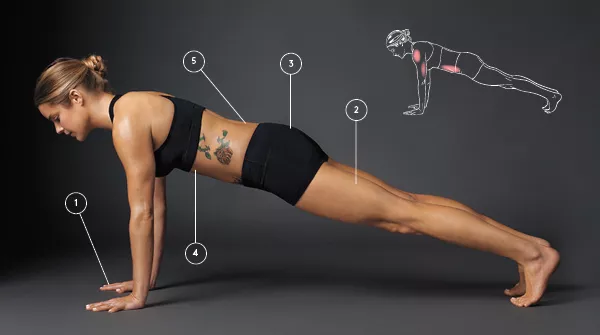
1. Place your hands flat on the floor beneath your shoulders. Engage your upper back by stretching the shoulder blades wide. Look forward and draw the nape towards the ceiling.
2. Start on your knees, then stretch your legs out behind you. Push your heels back, squeeze your thighs, and engage your glutes. This will support your spine while strengthening your muscles.
3. Keep your bottom in line with your spine. Don’t let it rise up towards the ceiling. Your body should form a straight diagonal line from your shoulders to your heels.
4. Engage your core by squeezing your belly button up towards your spine. Breathe steadily.
5. Don’t let your lower back collapse or dip. Keep your spine lengthened from the shoulders to the coccyx. You shouldn’t feel any discomfort or pain in the lumbar region if your posture is right, but you may feel a burn in the thighs, arms, and core.
5 ways to prevent lower back pain when running
Starting to feel the first twinges of lower back pain when you run? Here are five ways to prevent low back pain from worsening.
1. Strength training
Incorporate the strengthening exercises above into your workouts to build up your core and back strength, preventing future back pain in your lower spine.
2. Run on a treadmill
Treadmill runners are less likely to sustain an injury than those who run on hard ground and other surfaces [14]. Running on a treadmill has less impact on your joints, so if your low back pain is linked to sacroiliac or facet joint pain, this could be a good solution.
3. Pace yourself
Increasing your running speeds and/or distances too soon can lead to injury, so pace your running programme appropriately.
If you’re new to running, use the NHS Couch to 5K programme to set a steady pace and minimise the risk of injury.
4. Wear the right shoes
Wear appropriate footwear to run in. If you’re not sure where to start, you can get gait analysis and advice from local running shops to find the right footwear for you.
Running shoes tend to wear out after a few hundred miles, after which they won’t give you as much support. Replace your shoes when necessary to ensure you have enough cushioning to prevent injury.
5. Consider steroid injections
Running can strengthen your lower back, but it’s not always easy to maintain a steady running practice when you have pain in the lumbar spine.
If you’re struggling with back pain and other interventions haven’t helped, steroid injections can eradicate pain within just a few days. Different types of injections for back pain allow you to comfortably strengthen your core and back muscles and get your running routine back on track.
Get low back pain advice at Harley Street Specialist Hospital
At Harley Street Specialist Hospital, we can help with all kinds of back and spine pain. We work with a large number of pain management consultants, each of whom specialises in helping you find the right way to manage and alleviate your discomfort. Book an appointment with our team for a comprehensive assessment, diagnosis, and treatment plan.




